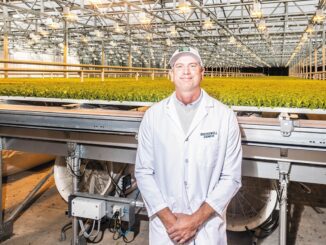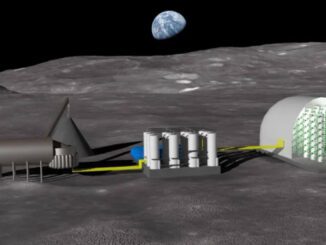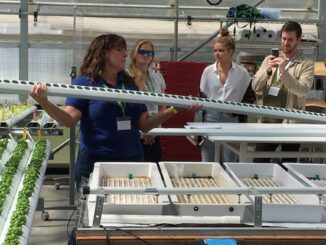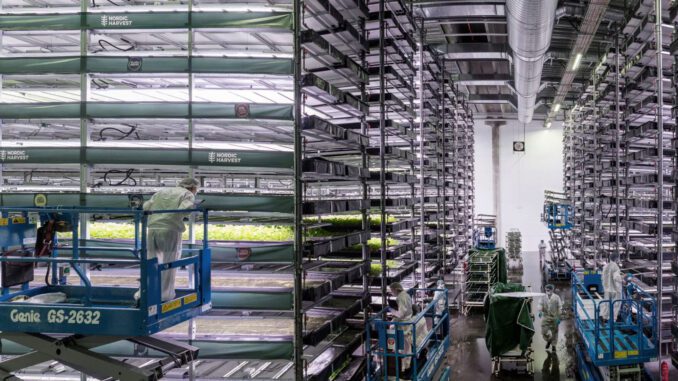
The future of Vertical farming
Future Vertical Farming | ANE MESTVEDTHAGEN |
From the outside, it may look just like your regular office building. But inside, the future of farming takes place. Fruits, vegetables, and herbs are produced in layers and layers stacked above each other, known as vertical farming.
These office buildings are emerging across Europe, and are particularly suited for growing crops in urban areas where space is scarce. Producers promise nutritious, pesticide-free, high-quality crops. It may even help ensure food security in countries less conditioned for conventional farming. But while the first crops are already in stores in some countries, there are still some years before the European food market is overtaken with products from vertical farms.
Changing diets and higher demand
Together with cultivated meat, vertical farming is often presented as a main solution to combat future food crises. But first, why do we need vertical farms? Is it not enough to grow crops the old fashioned way, just like we humans have done it the past 10,000 years?
Food demand increases every year. According to the United Nations, the world population is estimated to increase to 9.7 billion people by 2050. All of these people need food. But growing food the traditional way has become more challenging. Climate change gives new growth conditions, which means that some crops can no longer grow where they used to. Harsher weather conditions and heavier storms destroy more crops each year. And in some places, the soil is less nutritious than before.
Besides meeting future fresh food demand, our diets today are far from as sustainable as a century ago. “Our enormous purchase power means that we demand all kinds of goods all year round. We don’t eat season-based anymore. In the winter, we eat salads and berries that we import,” says CEO Anders Riemann from Nordic Harvest, the largest hydroponic farm in Europe.
Summer crops from the Arctic
Vertical farms could be placed virtually anywhere. This means that in the cold Arctic, strawberries could be grown even during winter. People could finally enjoy these delicious berries without worrying about CO2 emissions from importing berries from across the world.
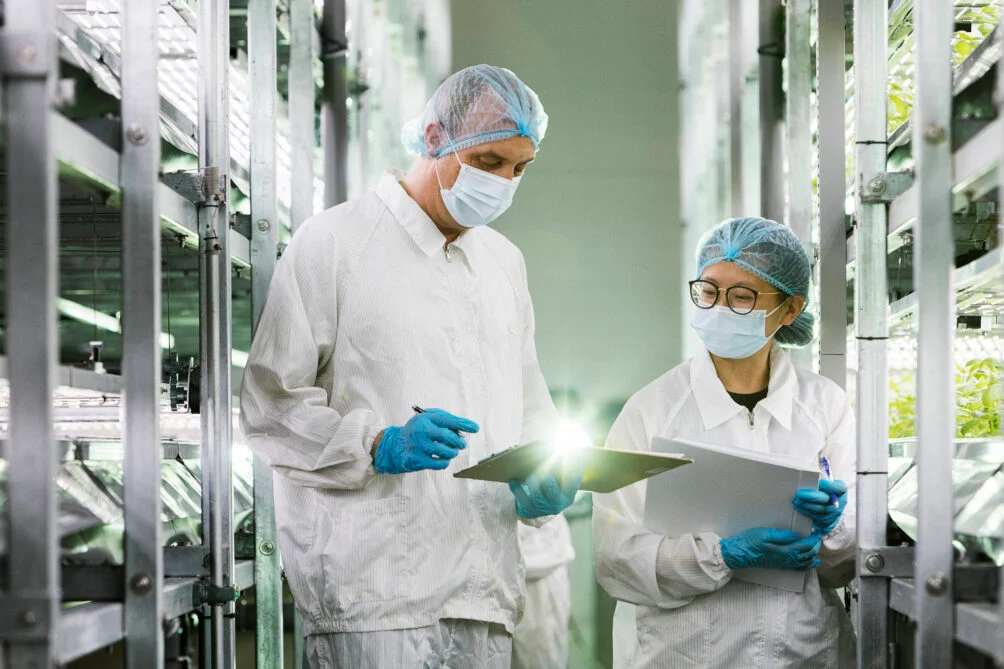
Above: Vertical farmers wear protective gear not to bring unwanted bacteria into the farm. This way they can avoid using pesticides. Photo: Nordic Harvest.
But there are more reasons why this method is highly sought after. Vertical farming requires no use of pesticides, and the producers are given full control to produce exactly what and how much they want within a time frame set by themselves and also with a specific quality of the crop. Weather or seasonal conditions and storms no longer affect the production, and more food can be grown on a smaller land area. It could also help reduce CO2 emission in the transport sector, as the food is grown closer to the customer instead of flown across the world.
How it works
“For me, the major advantage of vertical farming is full control. We can really optimize the process, we know exactly the amount we want to grow, we can grow the exact amount of the year, and also of a specific quality,” says Leo Marcelis, professor in Horticulture and Product Physiology at Wageningen Research University.
Read the Entire Original Article Here: https://innovationorigins.com/en/dossier/the-future-of-vertical-farming/

